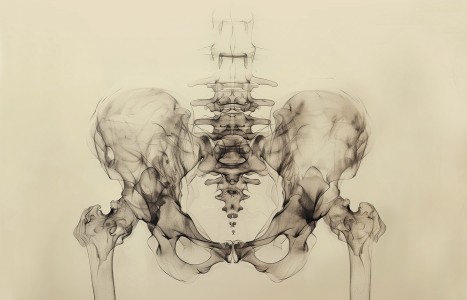People today want convenience, whether it be from their bank, credit card, favorite retail store, or restaurant. They demand it from the companies who hold their loyalty, including their health care providers (you). They don’t want to call and possibly be put on hold, and they want to use an app or schedule an appointment on your website. Here are three reasons your practice can gain by switching to online appointment scheduling.
Learning From My Past Mistakes
In case you had forgotten that you aren't alone in your fumblings as a practitioner, I thought I would write another piece on mistakes that I have made with patients. Many columns ago, I shared with you treatments that didn't work because, simply, I made needling related mistakes. If you missed that one and are excited to read how, after decades in practice, a competent practitioner could mess up, it is in the Acupuncture Today archives. It's not that I am excited about you seeing the under belly of my practice. But, if my sharing how I have fine-tuned my work helps you save time and mistakes, then baring all is worth it. We aren't alone when we mess up. We share our humanity.
The following are mistakes made in the treatment room, but unrelated to needling. I would like to share these three examples with you in hopes that you can avoid making the same mistakes.
Listen To The Patient
My patient Nathan had elbow pain and while willing to explore acupuncture as a treatment option, he wasn't completely comfortable with the idea. He was skeptical about results and nervous about pain from needling. He considered the work pretty far to the left. When I first met with Nathan I asked that he share about all his health challenges and learned that he also had chronic gastritis and headaches. Even though he came for pain relief, I told him that my work could be helpful in a multiplicity of directions. I gave him feedback on much of what he shared and incorporated some of broader ideas into the treatment.
The result was that Nathan felt I was trying to "sell him" and get him more deeply involved in working with me than he wanted me to be. I lost him as a patient after the third treatment, even though his elbow was better, because he felt pushed.
The mistake I made was that I based my interaction with Nathan on what I could do for him and what he needed, not on what he wanted. I didn't hear him. I heard his history.
I found the solution in this type of scenario is to give patients what they want and only what they want, even if directing treatments this way slows the progress you want for them. If a patient notices an improvement in their chief complaints, they may initiate moving onto other areas. This doesn't mean you must limit your work to a single focus. We are more holistically oriented than that and every treatment can address multiple energetic syndromes and symptoms. But, you build trust by allowing their goals to lead their experience of the work. Unlike myself in this instance, keep your ego and your design of the "correct" path out of the way.
BE Cautious
My patient Madison had not felt healthy for six years. She was a TV producer who worked hard and helped support her infirmed parent and brother and she had run herself into the ground. She had fatigue, unbearable headaches, menstrual problems, blood sugar and mood-related symptoms. I feel a high level of commitment to all my patients, but this one pulled at my heartstrings. In her early 30s, Madison had the pulse of an old woman.
I was diligent in my efforts, but Madison wasn't responding as well as I expected. This went on for a few months.
As soon as she felt just a little better, Madison went out and worked harder. She used our work to give her the energy to do more. Her compulsion to keep going at all costs was a component of the illness that she didn't recognize in herself and thus, couldn't share with me. She agreed to exert the discipline required to get well as often as she broke the agreement without telling me. As hard as her life was, she was determined to keep living it on her terms, at the cost of her health and against my suggestions. Not yet ready to take full responsibility for turning her illness around, Madison eventually viewed me as a critical mother figure and rebelled against my support.
I made two mistakes with Madison. First, because I believed her story, I didn't look at how she was re-creating her problem and feeling victimized by her own choices. Second, I was putting more effort into getting my patient well than she did.
What I learned from this is to trust the quality of your work more than you trust your patient's words. If you are not seeing the results you anticipate, maybe you don't have a partner in the process. Perhaps you are being lied to or important information is being inadvertently omitted. Listen more deeply to how he/she thinks and speaks, not just what he/she says.
Do not be afraid to confront a patient if you don't think you are getting the whole truth. Build respect for and trust in your work and be willing to challenge a patient's motives and authenticity. You never know the deep drives that someone carries in the yin aspect of his or her personality. It can take time to discover what is underneath someone's superficial personality structure.
Be Mindful
My patient Chris didn't know why he smoked. He had tried to quit over and over without success. This was a frustrating issue for him and he said that repeatedly during our initial phone call and visit. He wanted to be successful this time and had heard that acupuncture could make a difference.
After spending a lengthy initial session asking questions I told him why I thought he smoked, based upon my observations, and what he would need to do to be successful. I surmised that Chris had some emotional issues that were conveniently avoided by smoking. He grabbed cigarettes when angry, sad, and lonely - just about any negative feeling. Instead of holding back information, which can be imperative for the overwhelmed qi and blood deficient patient, I shared it all in order to help him.
Chris tolerated my initial treatment follow-up phone call with forced enthusiasm and never returned. He wasn't ready to know about himself as deeply as was required to be successful to stop smoking. His qi wasn't strong enough to handle the work and his blood wasn't rich enough to provide the psychological self-nourishment. He was more capable of enduring the identity of failure than embarking upon the journey required to achieve success.
The mistake I made in this situation was that I needed to give Chris only as much information as he could digest and work with successfully. His self-nourishing ability needed to be strengthened prior to facing his inner demons and I needed to recognize that. He wasn't energetically strong enough to be self-loving in the face of pain and his self-esteem was low. The hot smoke of tobacco compensated for the true yang deficiency by bringing artificial yang chi into a yin organ. Chris used smoking to avoid some serious psychological issues that he wasn't strong enough to face. Smoking provided safety from pain for him. I couldn't pull that safety away and expect success.
When you encounter a situation like this, be mindful of how much a patient is ready to hear. Yin (blood) energy is required for receptivity. Having answers for someone doesn't mean they are ready to know them. Instead of being direct, I might have suggested that we take several sessions to prepare his body to quit tobacco. During that time I could have supported his blood such that he had the stamina to face his stress and inner challenges. Receiving treatments could have helped him do the preliminary work that would've made quitting successful. It would have taken some time to accomplish this goal, but I would have served my patient rather than frightened him.
This patient inspired a new way of addressing tobacco addiction in my practice.
Now, I always ask people five questions before I agree to treat them. I give them a questionnaire on their first visit and request that they answer it and bring it back. In the meantime, I "prepare the body" for the smoking cessation treatments for as long as it takes. This gives patients plenty of time to take the questionnaire seriously and to gain the strength to find the answers.
Below is the questionnaire I use that may be helpful for your practice as well:
Smoking Questionnaire
- What are your biggest wins from smoking? How does it benefit you? List every benefit that you get. Relaxing, dissolves stress, cools anger, etc.
- What are your biggest losses from smoking? How does it harm you? List every thing that smoking does to harm you. Makes wife not want to kiss me, makes me smell bad, expensive, etc.
- What will you do to substitute for every benefit that you currently get from smoking? What activities will compensate sufficiently? Make a list that fulfills every item on the benefits list. Walk 15 minutes when I feel stressed, learn to meditate when I am angry, etc.
- What will be the positive results of your quitting? Make a list that addresses every item on the losses list. Wife will want to kiss me, no need for embarrassment in elevators due to smell, etc.
- What will you do to not smoke when you crave a cigarette in one month's time?
Final Thoughts
For many, finding these answers begins a successful journey out of tobacco use because the benefits of their smoking are being recognized and considered. When a patient tries to quit but doesn't have an alternative way of getting those benefits, they are less likely to be successful. Only when I have a comprehensive set of answers will I begin treatment.
No matter what mistakes you make, the most important thing to be able to do with them is to forgive yourself for having made them. For those of us who are perfectionists, this isn't easy. Still, doing so allows the cycle of yin and yang to continue evolving. Through self-forgiveness we cultivate compassion for our patients and ourselves. Compassion is at the heart of every great practice. It is the primary quality of Quan Yin, the Goddess of Healing. When the foibles of humanity are viewed with this sacred value, the public sharing of my mistakes becomes miniscule in comparison.


